Strip Roads Gave Good Service
INTRODUCTION BY NICK BAALBERGEN
Below is another story extracted from the book 'Know Your Rhodesia and Know Nyasaland'.
The 'Strip Road' was a uniquely Rhodesian concept. It was essential for the development of the very young country, a mere 40 years after the Pioneer Column had first entered the country, to construct a road network. This was of course not immediately possible because of financial constraints. This meant that the development of the country would have to be delayed until the necessary finances became available, OR an alternative would have to be implemented. The 'Strip Road' concept was arrived at essentially as an interim measure. This would allow for the development of a much needed funcional road network while financial resources were being built up to construct a fully tarred road infractructure.
Driving on 'Strip Roads' was of necessity a mutually collaborative effort because two way traffic was travelling on a single set of strips. Overtaking and passing oncoming traffic required that the two vehicles move over to use the relevant strip while completing the move. The 'low level' bridges were all built as 'single lane' structures, so right of way was determined by which car arrived at the bridge first. A simultaneous arrival at opposite end of the bridge was usually settled by courtesy of the drivers, a flash of the headlights giving the other car the 'go ahead'.

MENTION SOUTHERN RHODESIA to any South African or overseas motorist who has visited the Colony and he will invariably comment, in uncomplimentary fashion, about our strip roads.
But they have served a useful purpose, enabling many more miles of road to be built than would otherwise have been possible.
The strips have been in existence since the early 1930's. They are now being replaced by fully tarmacadamised roads, which to-day are found on most of the main routes. In a few years, every motorist hopes, the strips (now old and calling for constant patching) will have ceased to exist. Meanwhile, let us not forget the good service they rendered at low cost.
The first strip road was built from Gwelo to Selukwe. Mr. Stuart Chandler. Chief Road Engineer at the time, followed this up by building concrete strips from Bulawayo to the Matopos and from Salisbury to Beatrice in 1932.
The cost of building concrete strips was so high, however, that an alternative method had to be employed, so Mr. Chandler changed to the bitumen strips which became the standard type.
Experiments were carried out with asphalt in 1932 and the first of the strips as we now know them were laid. By the end of 1933, 54 miles of bitumen strips had been laid at an average cost of £320 a mile—a saving of more than £200 a mile on the previous method.
By 1939 there was a total of about 2,000 miles of strips. They were built to last 10 years, but with the coming of the war they had to last longer than was intended and there are now some strips in fair condition that are more than 20 years old.
End
ADDITIONAL TEXT EXTRACTED FROM A 1967 BOOKLET.
It was in 1930 that the Chief Road Engineer of the day, while travelling along the well-worn trucks in the Eastern Districts, was inspired with the idea of surfacing these tracks in some way or other. This was the beginning of the "strip" roads so characteristic of Rhodesia.
At first concrete was used but tar macadam was found more suitable. These roads, which have two narrow tarred strips an axle base apart, were considered a great luxury and at one time constituted the country's main roads.
Many parts of the world, including countries in the Far East, asked for details regarding their construction. To-day these old tracks which served the country so well can only be found deep in the country, for they have been replaced by excellent modern roads or have become swallowed up by the bush.
During those years many low-level bridges were constructed on the main roads, usually with money given by the Beit Trustees. These made travelling less hazardous but there were occasions when flood-waters over-topped them by many feet and travellers were often caught between two rivers where they waited for hours and even days. These times have gone and the low-level bridges have been replaced by concrete structures, many of which take traffic far above the level of any hazards.
PHOTOGRAPHS MADE AVAILABLE BY NICK BAALGERGEN
Lundi River Old Low Level Bridge (West-Left) and Current Bridge completed in 1961
The approach to flooded Lundi low level bridge near Rhino Hotel. January 1974
Lundi River in flood - the low level bridge, near the Rhino Hotel. January 1974
Old low level bridge and current bridge. Bubi River Zimbabwe. 28 December 1987
Strip road between Fort Victoria and Birchenough Bridge
Crossing the Lundi, 1890
Photo taken from 1975 edition of NADA.
(The 1890 photograph is of the Pioneer Column crossing the Lundi River)
The Lundi Crossing, 1974
Photo taken from 1975 edition of NADA.
NADA represents the NAtive Affairs Department Annual
New bridge under construction. Low level bridge still in use. Circa early 1960s
End of Article
Thanks to Nick for sharing his memories with ORAFs.
Comments are always welcome, send them to Eddy Norris at orafs11@gmail.com
Old Strip Roads
By Neill Jackson
I read with interest your article on the old strip road system in Rhodesia and remember well travelling on them with my parents, when I was still atjunior school.
I attach a couple of photos taken during a trip 'home' in 2005, for nostalgia's sake. This would have been the main Bulawayo to Vic Falls road and the strips are still in use as access to the elephant rides and walking with lions activities about 20km outside Vic Falls.
You are most welcome to use these photos if you wish.
End
Thanks to Neill for sharing his memories and photosgraphs with ORAFs.

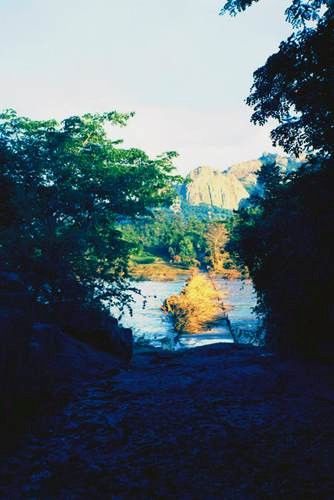
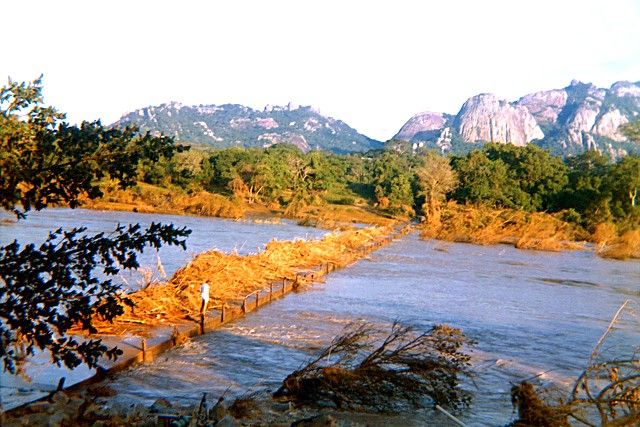
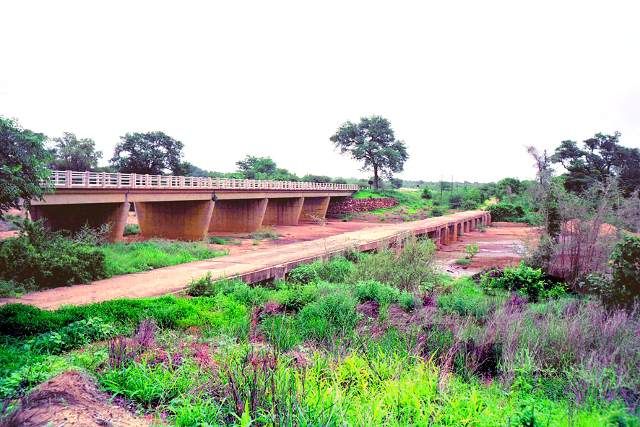




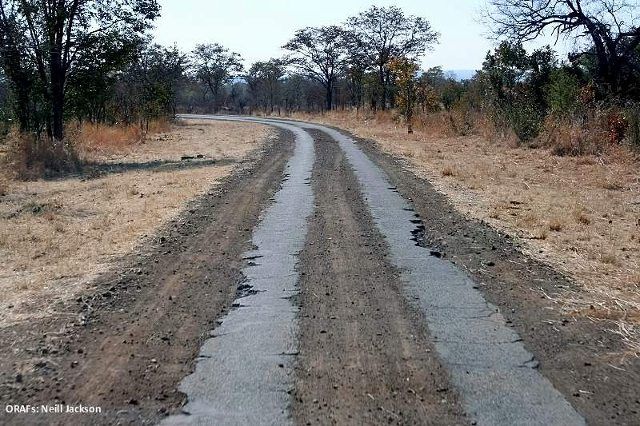
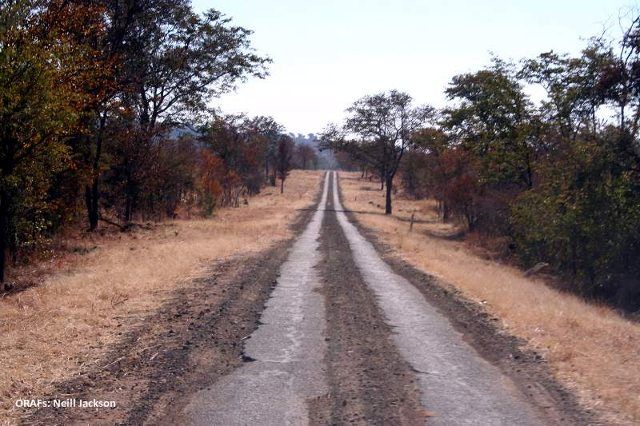


5 Comments:
Such a powerful and unique aspect of the times there and a marvelous way to traverse the country before the advent of `big roads`. Thankyou very much indeed for the pictures. Jerro
I would love to contact Neill Jackson regarding the use of his strip road photos. I am currently working on a book about Rhodesia and would love to use a photo! Please contact me at katedesign@msn.com
My beloved grandfather was Stuart Chandler the originator of the strip roads in Zim. He was awarded the OBE for this. Grace Mendes
Hello Grace
My Great Great Uncle was James (Jim) Chandler, Stuart being his Son and my Great Grandmother's Cousin. James must be your Great Grandfather? The Chandler family are my Father's side (Scott). We are trying to find/research our family in South Africa and Ireland. Please get in touch we would love to know more about your the family. Rachel Scott-Ruck
My email is miss_scott100@hotmail.com
GOOD THINKING INDEED AND ENGINEERING SKILLS WELL APPLIED HERE.
Post a Comment
Subscribe to Post Comments [Atom]
<< Home